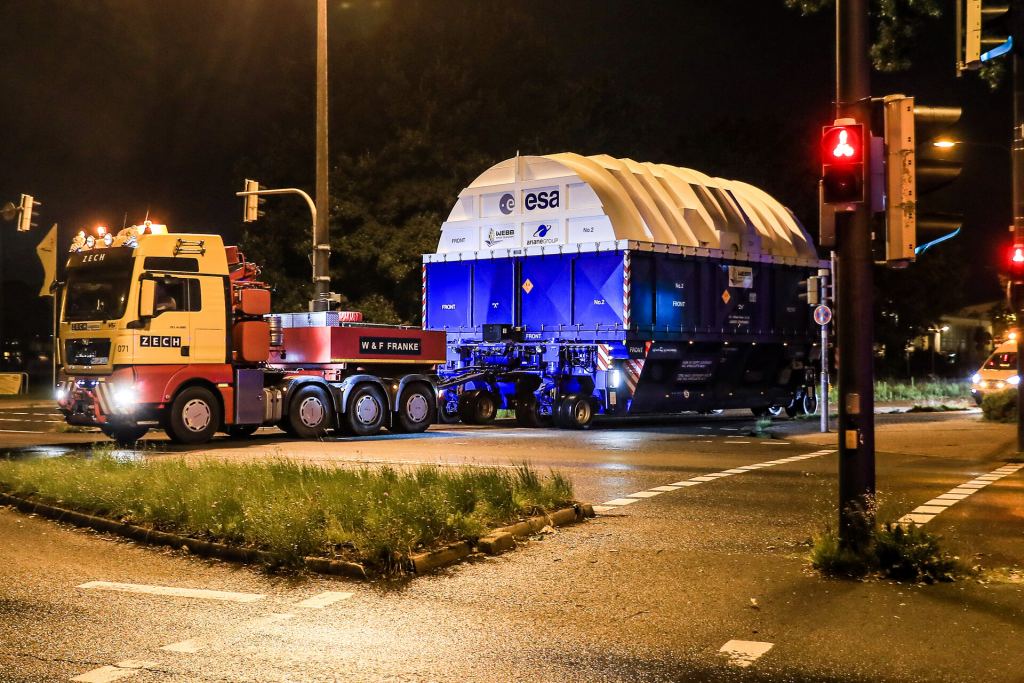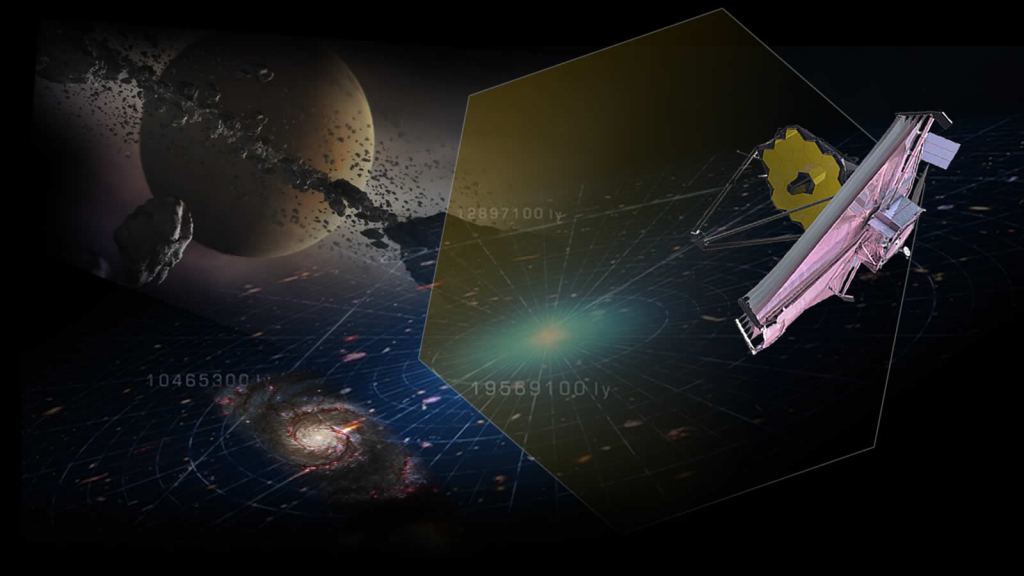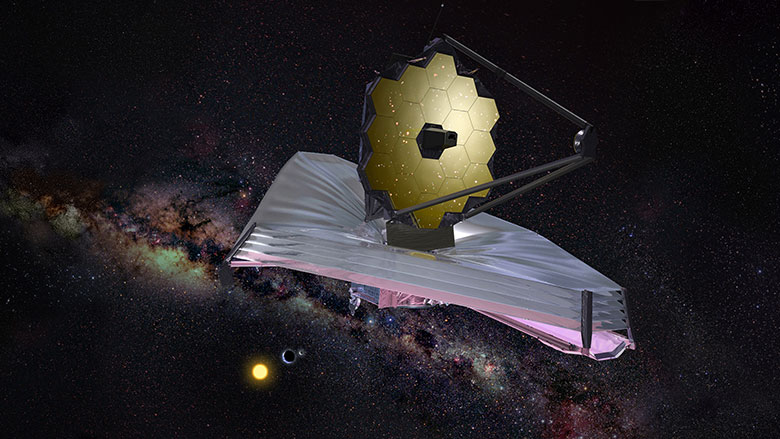In November (or early December) of this year, after many excruciating delays, NASA’s James Webb Space Telescope (JWST) will finally launch to space. As the most advanced and complex observatory ever deployed, the James Webb will use its advanced suite of instruments to observe stars, exoplanets, and galaxies in the near and mid-infrared spectrum. In the process, it will address some of the most enduring mysteries about the nature of the Universe.
When the time comes, the James Webb will fly aboard an Ariane 5 rocket from the European Space Agency (ESA) launch facility near the town of Korou, French Guayana. Overnight on August 17th, 2021, the upper stage of that Ariane 5 began making its way in its cargo container from the ArianeGroup facility in Bremen, Germany, to Neustadt port, where it will board a ship bound for the ESA spaceport in French Guiana.
In addition to providing the launch services through their commercial partner Arianespace, the ESA was also responsible for the development and qualifications of the Ariane 5 adaptations for the JWST mission. This was necessary given the complexity and size of the JWST, which measures about the same size as a tennis court when fully deployed. In order to fit inside the payload fairing of a rocket, the telescope was designed to be folded up.

This is necessary because of the large sun shield the observatory carries, which will shield the deployed primary mirror and the tower that holds the secondary mirror. This five-layer structure measures 21 m x 14 m (69 x 46 ft) when fully unfolded – or 294 m2 (3,174 ft2). When in its folded configuration, it measures just 10.66 m x 4.5 m (~35 x 15 ft) – or ~48 m2 (~525 ft2). This allows it to fit inside the confined area – 5.4 x 17 m (~18 x 56 ft), or 91 m2 (1,008 ft2) – of the Ariane 5’s payload fairing.
Other adaptations include new hardware, which ensures that venting ports around the base of the payload fairing remain fully open. This is to minimize the shock of depressurization when the two halves of the fairing jettison away from the launch vehicle after the second stage carries the James Webb beyond Earth’s atmosphere. In addition, the Ariane 5 will perform a specially developed rolling maneuver to protect the telescope from solar radiation and heating caused by friction with the atmosphere.
Additionally, the Ariane 5 will carry an extra battery so the upper stage can receive a boost after it releases the telescope, letting it put some extra distance between it and the James Webb. The observatory will also be integrated using a launch vehicle adapter ring, which could be used by future spacecraft to grab hold of the observatory and correct its orbit (in the event that there are issues with the deployment).

Once it reaches Neustadt, the second stage will board the MN Toucan cargo vessel, where it will join the other elements of the launcher and continue on its journey to South America. According to the most recent statements made by officials at NASA’s Science Mission Directorate (SMD), the telescope will be shipped to the launch site later this month (possibly sometime in Sept). From that point, it will take 10 weeks to ready the telescope for launch, with 55 days alone required to load it aboard the rocket.
Compared to its predecessor, the venerable Hubble Space Telescope, the James Webb will be significantly larger. Its primary mirror measures approximately 6.5 (21.3 ft) in diameter, about 2.75 times larger and about six times the area of Hubble‘s. But whereas Hubble weighed about 12,250 kg (27,000 lbs), the James Webb will weigh a little more than half that – approximately 6,500 kg (14,300 lbs).
The James Webb is the result of decades of hard work and development by scientists, as well as a lucrative international partnership between NASA, ESA, and the Canadian Space Agency (CSA). Once operational, it will become the premier observatory of the next decade, serving thousands of astronomers worldwide and allowing for all kinds of breakthroughs in our understanding of the Universe and the physics that govern it.

Its suite of advanced optics, IR-imaging capability, spectrometers, and coronagraphs, will allow astronomers to characterize the atmospheres of exoplanets, which is key to determining whether or not they could support life as we know it. It will be able to peer back to the earliest periods of the Universe (aka. the “Cosmic Dark Ages”) and see the first galaxies when they were still forming.
It will also be used to study star systems in the process of formation, yielding valuable clues about how systems capable of supporting life emerged. Here at home, it will also provide valuable insight into the evolution of the Solar Systems, the kinds of objects that populate the Kuiper Belt, and study bodies like Europa and other “ocean worlds” (which may be hosting lifeforms of their own!)
For these reasons, there is no shortage of scientists and regular folks who can’t wait for it to make it to space so it can get to work!
Further Reading: ESA

